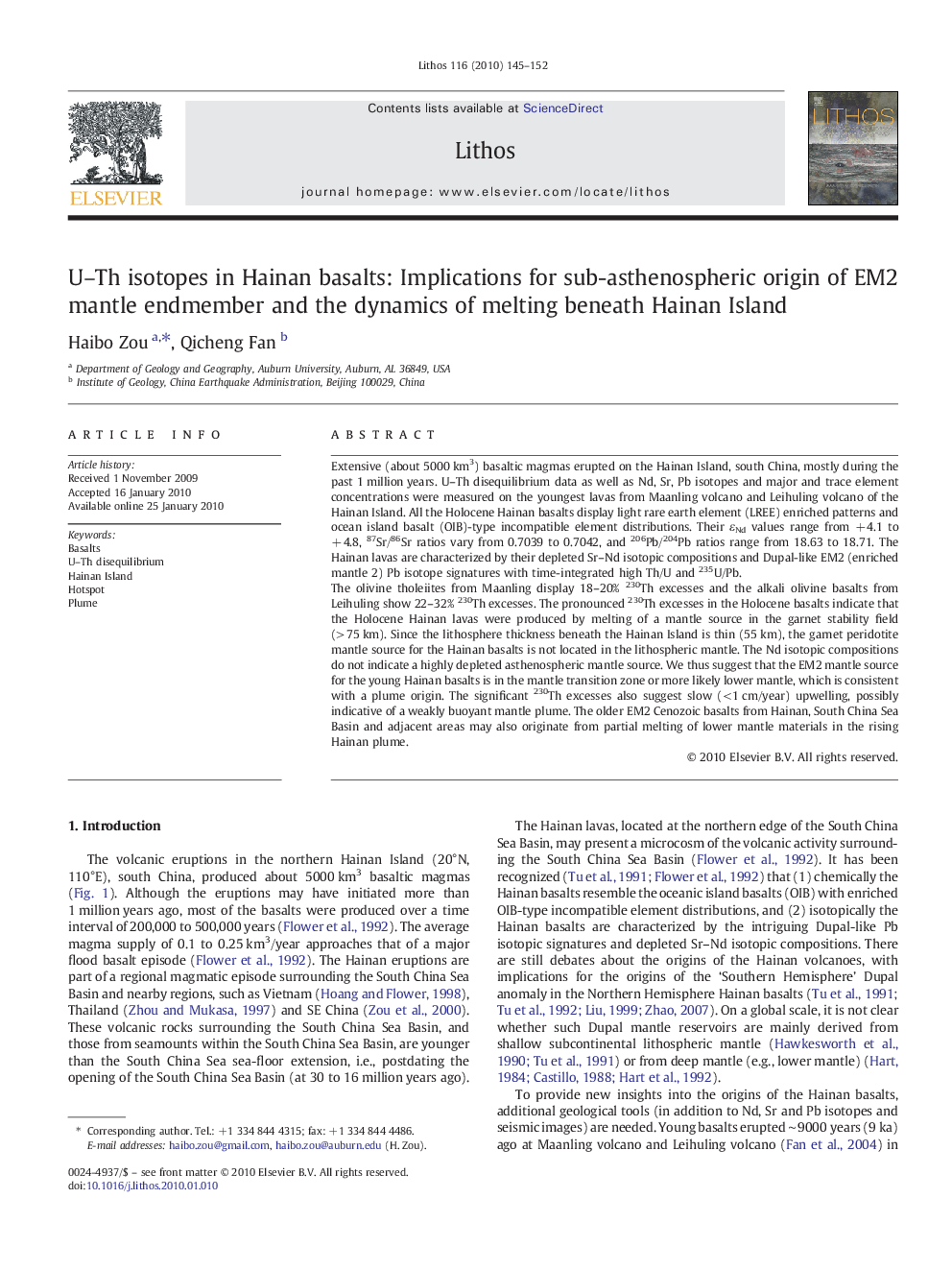| کد مقاله | کد نشریه | سال انتشار | مقاله انگلیسی | نسخه تمام متن |
|---|---|---|---|---|
| 4717112 | 1638734 | 2010 | 8 صفحه PDF | دانلود رایگان |

Extensive (about 5000 km3) basaltic magmas erupted on the Hainan Island, south China, mostly during the past 1 million years. U–Th disequilibrium data as well as Nd, Sr, Pb isotopes and major and trace element concentrations were measured on the youngest lavas from Maanling volcano and Leihuling volcano of the Hainan Island. All the Holocene Hainan basalts display light rare earth element (LREE) enriched patterns and ocean island basalt (OIB)-type incompatible element distributions. Their εNd values range from + 4.1 to + 4.8, 87Sr/86Sr ratios vary from 0.7039 to 0.7042, and 206Pb/204Pb ratios range from 18.63 to 18.71. The Hainan lavas are characterized by their depleted Sr–Nd isotopic compositions and Dupal-like EM2 (enriched mantle 2) Pb isotope signatures with time-integrated high Th/U and 235U/Pb.The olivine tholeiites from Maanling display 18–20% 230Th excesses and the alkali olivine basalts from Leihuling show 22–32% 230Th excesses. The pronounced 230Th excesses in the Holocene basalts indicate that the Holocene Hainan lavas were produced by melting of a mantle source in the garnet stability field (> 75 km). Since the lithosphere thickness beneath the Hainan Island is thin (55 km), the garnet peridotite mantle source for the Hainan basalts is not located in the lithospheric mantle. The Nd isotopic compositions do not indicate a highly depleted asthenospheric mantle source. We thus suggest that the EM2 mantle source for the young Hainan basalts is in the mantle transition zone or more likely lower mantle, which is consistent with a plume origin. The significant 230Th excesses also suggest slow (< 1 cm/year) upwelling, possibly indicative of a weakly buoyant mantle plume. The older EM2 Cenozoic basalts from Hainan, South China Sea Basin and adjacent areas may also originate from partial melting of lower mantle materials in the rising Hainan plume.
Journal: Lithos - Volume 116, Issues 1–2, April 2010, Pages 145–152